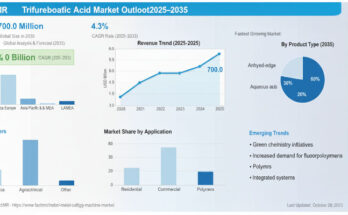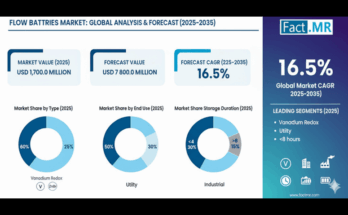The sodium-ion battery market is entering a period of unprecedented growth, driven by rising demand for grid storage solutions, electric vehicles (EVs), and alternative energy storage systems. Valued at USD 1.8 billion in 2025, the market is projected to reach USD 12.5 billion by 2035, reflecting a 21.4% CAGR and nearly a sevenfold increase over the decade. This surge is fueled by investments in next-generation battery chemistries, renewable energy integration, and the growing need for cost-effective energy storage solutions.
Market Growth & Trends
From 2025 to 2030, the sodium-ion battery market is expected to expand from USD 1.8 billion to USD 4.6 billion, contributing USD 2.8 billion (26.2% of total ten-year growth). This phase is driven by:
- Rising adoption of grid-scale energy storage systems.
- Increased use of sodium-ion batteries in electric vehicles for cost-efficient alternatives to lithium-ion solutions.
- Product innovations in cathode materials and advanced cell manufacturing technologies.
Between 2030 and 2035, the market is forecast to grow from USD 4.6 billion to USD 12.5 billion, accounting for USD 7.9 billion (73.8% of total growth). Key growth drivers include:
- Expansion of specialized automotive applications, including EV battery systems.
- Strategic collaborations between battery manufacturers and automakers.
- Emphasis on regulatory compliance and performance standards for alternative energy storage solutions.
The sodium-ion battery market is benefiting from government incentives promoting renewable energy integration, EV adoption, and sustainable grid modernization projects worldwide.
Segment Insights
By Application:
- Grid storage dominates with 50% market share in 2025, essential for renewable energy integration and utility-scale energy management.
- EVs hold 35% share, offering cost-effective battery solutions for automotive manufacturers.
- Consumer devices account for 15%, supporting portable electronics and specialized energy requirements.
By Cathode Type:
- Prussian Blue and Layered Oxide cathodes each represent 40% of the market in 2025, combining stability, energy density, and manufacturability.
- Other cathodes hold 20%, focusing on emerging chemistries and experimental applications.
By End User:
- Utilities: 45% share, driven by grid storage deployments.
- Automotive: expanding rapidly with EV adoption.
- Electronics: steady growth for portable and consumer applications.
Regional Analysis
Asia-Pacific:
- India leads with 25% CAGR, driven by renewable energy projects and EV policies.
- China follows at 23% CAGR, fueled by automotive electrification and large-scale battery manufacturing.
North America:
- USA projected CAGR of 18%, anchored by grid modernization initiatives and EV adoption.
Europe:
- Germany grows at 19% CAGR, supported by advanced energy facilities and automotive infrastructure.
Other Key Regions:
- South Korea (17% CAGR) emphasizes technology integration and manufacturing efficiency.
- Japan (16% CAGR) prioritizes quality-focused battery production.
Competitive Landscape
The sodium-ion battery market features moderate concentration, with 10–15 key players controlling 35–45% of global market share. Market leaders include:
- CATL
- HiNa Battery
- Natron Energy
- Faradion
- Tiamat
- Altris
- Northvolt
- Reliance
- NGK
- Clarios
These companies compete through technology innovation, manufacturing capacity, and integration of batteries into energy storage and EV systems. Emerging players focus on niche applications, regional market penetration, and advanced cathode materials.
Market Drivers, Challenges & Trends
Drivers:
- Renewable energy integration and grid modernization.
- Government initiatives supporting EV adoption and clean energy programs.
- Cost advantages over lithium-ion batteries (40–60%) for utilities and automakers.
Challenges:
- Complex manufacturing and validation processes.
- Technical limitations in energy density optimization.
- Supply chain constraints for specialized materials.
Trends:
- Accelerated adoption in India and China.
- Integration of advanced cathode materials for improved energy density.
- Development of intelligent battery management systems for optimized performance.
Browse Full Report : https://www.factmr.com/report/sodium-ion-battery-market
Future Outlook & Industry Impact
By 2035, the sodium-ion battery market will be a core component of global energy storage strategies, supporting:
- Cost-efficient grid storage solutions.
- Scalable EV battery production with sustainable chemistries.
- Diverse applications in consumer electronics and specialized energy devices.
Industry leaders, investors, and manufacturers are advised to invest in sodium-ion battery technologies, expand regional operations, and explore strategic collaborations to capture high-growth opportunities. Governments and industry bodies can accelerate adoption through policy support, standardized battery protocols, and skill development initiatives.


